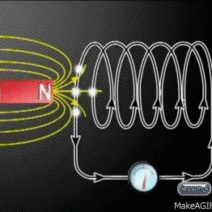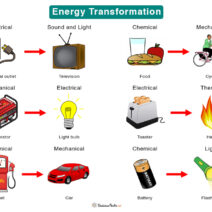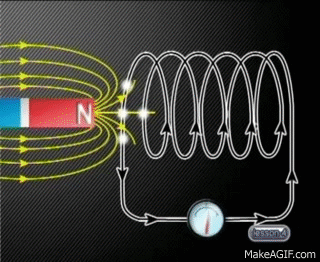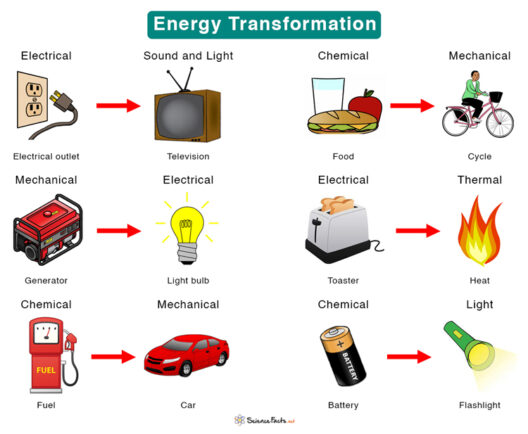In the realm of electromagnetism, Lenz’s Law stands as a beacon illuminating the relationship between magnetic fields and electric currents. Ever pondered how we can use electricity without inordinate waste? This inquiry leads us to the fundamental principles governing electromagnetic interactions, particularly focusing on Lenz’s Law and its intrinsic connection to the Law of Conservation of Energy.
Lenz’s Law, articulated by the German physicist Heinrich Lenz in 1834, states that the direction of the induced electromotive force (emf) and current in a closed loop is such that it opposes the change in magnetic flux that produces it. This simple, yet profound, principle can be visualized in numerous practical applications, from electric generators to induction cooktops. But how does this law gel with the overarching idea that energy cannot be created or destroyed—only transformed? That is the crux of the matter. The dance of electricity and magnetism, governed by Lenz’s Law, does not merely inform us of oppositional forces; it encapsulates the very essence of energy conservation.
Consider, if you will, a scenario: a magnet is swiftly moved toward a loop of wire. As the magnetic field penetrates the loop, according to Lenz’s Law, a current will be induced in the wire. However, that induced current flows in such a direction as to create its own magnetic field, one that opposes the movement of the magnet. The playful question here is, does this opposing force consume energy, or does it reflect an intricate game of energy transformation?
The answer is deeply rooted in the principles of physics. When the magnet approaches the wire, the induced current generates an electromagnetic force that resists the magnet’s motion. This opposition requires work—work that is drawn from the energy of the magnet’s motion. Consequently, as the magnet travels closer, it diminishes in kinetic energy; this energy is converted into electrical energy in the loop and subsequently dissipated as thermal energy through resistance in the wire. Thus, energy is neither lost nor created; it is merely transformed from one form to another, adhering to the Law of Conservation of Energy.
To grasp this concept fully, let’s unravel the components involved. The magnetic flux, a measure of how much magnetic field passes through a given area, is crucial here. When the magnet changes its position relative to the coil, the flux through the loop shifts, leading to induction. Lenz’s Law’s role becomes evident: it ensures that the induced current always counteracts the change in flux, thereby safeguarding the integrity of energy conservation. If the induced current favored the flux’s increase, energy would seemingly sprout from nothing, violating the law of conservation.
Now, let’s investigate some real-world applications of Lenz’s Law. When an electric generator spins a coil within a magnetic field, the law helps to maintain the balance of energy transformation. The mechanical energy input is converted into electrical energy while adhering to the laws of physics. Revolutionizing technologies, such as regenerative braking in electric vehicles, also embody Lenz’s Law principles. During braking, kinetic energy is transformed back into electrical energy, replenishing the battery and enhancing overall efficiency.
Moreover, Lenz’s Law extends its influence within the science of transformers. Here, alternating current creates an ever-changing magnetic field, inducing a current in a neighboring coil. As energy flows from one coil to another, the law ensures that any induced changes are met with appropriate opposition. This harmony results in efficient energy transfer, a prime requisite for modern electrical distribution systems.
In essence, Lenz’s Law operates as a safeguard against the dissipation of energy. This interplay of forces not only illustrates the fundamental truths of electromagnetism but fortifies our understanding of energy conservation across a diverse array of applications. Observing these operations can lead to a deeper appreciation for the natural order and meticulousness of physical laws.
However, one cannot help but contemplate potential challenges posed by these principles—especially in a world striving for sustainability. What occurs when technologies driven by Lenz’s Law confront the demands of renewable energy? As society increasingly gravitates toward energy-efficient solutions, how do we harness Lenz’s Law while considering potential trade-offs? Are we ready to embrace technologies that might paradoxically become energy sinks due to inefficiencies, all while relying on the exquisite interplay of electromagnetism?
As we navigate the future, the urgency to utilize the knowledge from Lenz’s Law and the Law of Conservation of Energy cannot be overstated. Embracing these principles not only deepens our understanding of physics but can inform our approach to sustainable technologies. By maximizing efficiency in systems engineered around these laws, we can potentially mitigate energy wastage, conserve precious resources, and influence our trajectory toward more prudent energy consumption.
In conclusion, Lenz’s Law is not merely a fascinating aspect of electromagnetism; it embodies the respect for energy’s transformation and conservation. Through practical applications in numerous cutting-edge technologies, Lenz’s Law fosters innovation while reminding us of the operational boundaries defined by the laws of nature. The primary takeaway resonates with both the scientific community and everyday enthusiasts: understanding these physical interactions is paramount for creating a sustainable future, wherein humanity engages with energy responsibly and effectively.






